16 Nov How To Recognize Opioid Addiction And What Are Your Treatment Options?
Opioid addiction and dependence isn’t something that happens overnight, although it can happen in a matter of days for some people. Here’s how to recognize opioid addiction, as well as your treatment options during the Covid-19 pandemic.
Table of Contents:
What are opioids?
Opioids are a class of drug with pain-relieving effects. They can be natural or synthetic. Opioids can be broken into two main categories: prescription and illicit.
- Prescription opioids: Opioids that are prescribed by doctors to help manage pain, such as fentanyl, morphine, codeine, and others.
- Illicit opioids: Opioids that are illegally manufactured and distributed, such as heroin and opium.
What are the statistics of opioid use in the US?
Between 1999 and 2018, 450,000 people have died from opioid overdoses. Of the almost 70,000 drug overdose deaths in the US in 2018 alone, nearly 70% of these overdoses involved opioids (prescription and illicit). Currently, synthetic opioids (excluding methadone) are the leading cause of opioid-related overdoses.
Given these numbers, the president’s commission on combating drug addiction and the opioid crisis was founded in 2017 to address the ongoing crisis. Since then, the commission has made progress in combating the opioid crisis through funding initiatives, prosecuting fentanyl traffickers and distributors, and disrupting the online sale and distribution of illicit drugs.
In addition to these actions, the commission has increased naloxone prescriptions and made this life-saving drug more widely available at universities, public libraries, community centers, and high schools around the country (Naloxone is a drug used in the event of an overdose which blocks the effects of opioids on your body and helps restore your breathing.)
How to know if you’re addicted
Opioid prescribing practices have changed in the last decade, with the prescribing rate peaking in 2012 and steadily declining since then. Your doctor should discuss the risks of opioids with you prior to writing you a prescription and prescribe lower-dosage medication for shorter periods of time.
Despite such precautions, prescription opioids are highly addictive. If you’re taking prescription opioids and are concerned you may be addicted, here are some questions to help you recognize opioid addiction.
- Have you noticed withdrawal symptoms when you stop using opioids?
- Are you taking increasingly higher doses of opioids to achieve the same effect?
- Have you experienced any negative consequences alongside opioid use, whether in your personal or professional life?
- Do you have difficulty reducing the amount of opioids you use?
- Have you changed your schedule to accommodate your opioid use?
- Are you becoming preoccupied with either using or obtaining opioids?
If you’ve answered yes to three or more of these questions, you may want to speak to your doctor for their advice as to your next steps.
What medications are used for treatment?
Medications are often used during an addiction detox program to help reduce the symptoms of withdrawal and improve the patient’s comfort to help them successfully complete detox. Medication-assisted treatment (MAT) is generally combined with counseling and behavioral therapy for comprehensive care.
It is not recommended that you try to self-administer these medications, as they may be addictive when used improperly or could have adverse effects when mixed with other medications you may be taking. Your clinician will be able to assess whether there will be any conflicts with existing medications or medical conditions.
Opioid addiction medication used as part of treatment may include:
- Buprenorphine
- Methadone
- Naltrexone
What are other treatment options?
Opioid addiction treatment typically takes one of three forms: inpatient, outpatient, or in-home rehab services.
- Inpatient: Patients travel to and stay at a facility for the duration of their program, which may last several weeks or months. Patients receive professional medical attention and attend group therapy, counseling, and coaching.
- Outpatient: Patients travel to a rehab facility for half day or full day programs and return home every night. These programs may be useful for mild addiction or as part of an ongoing treatment program, as they do not offer as comprehensive medical care as inpatient facilities.
- In-Home Rehab: In-home services combine the quality of care of inpatient facilities with at-home convenience. Appointments take place in the privacy and comfort of the patient’s home, and patients have dedicated care and individualized therapy and support sessions.
How has Covid-19 affected addiction rehab?
The pandemic has changed the way opioid addiction is treated, however, with many traditional services such as counseling or support groups suspended or moving online via telemedicine.
Telemedicine can help you get diagnosed and offers many supportive services but may not be right for everyone. You’ll want to contact inpatient and outpatient services to find out what types of treatments are or are not being offered during Covid-19.
Related:
- How Does Opioid Withdrawal Look And What To Expect
- How Does In-Home Detox for Opioid Addiction Work?
- Can You Overdose From Opioids And How To Handle It?
- What Are Common Symptoms Of Opioid Abuse?
- How To Detox From Demerol
- How Does In-Home Detox for Cocaine Addiction Work?
- How Does In-Home Detox for Benzodiazepine Addiction Work?
- How Does In-Home Detox for Heroin Addiction Work?
- How To Detox From Fentanyl
- What To Expect From Medically Assisted Detox
Can You Get Home Detox?
If you recognize opioid addiction in yourself or a loved one and telemedicine recovery doesn’t sound like a good fit, you can still get in-person care with home detox. Elite Home Detox brings your appointments to you for convenient and effective rehab care.
One of our medical professionals comes to your home to help you safely overcome withdrawal symptoms and set a strong foundation for the counseling and therapy that will help you prevent relapse. Give us a call or book a consultation with us today.


